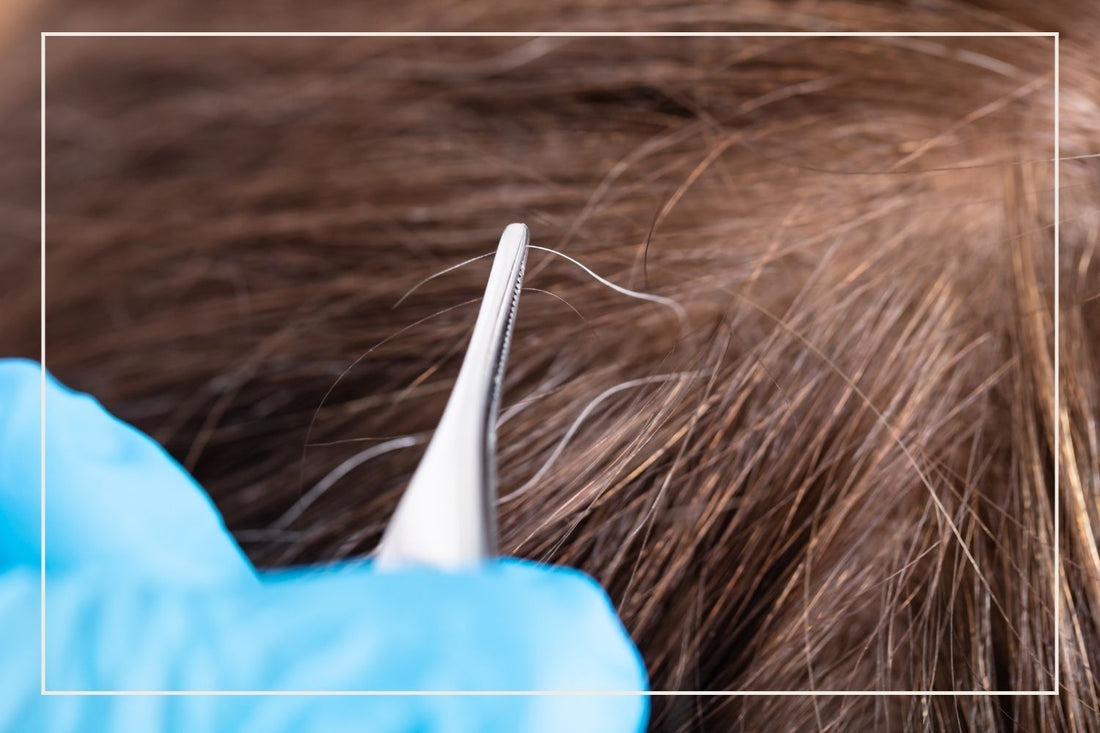If you go through the effort to pluck your hair rather than waxing or shaving, it might be because someone down the line told you that plucking is the sure-fire way to stop future hair growth, especially in smaller areas of unwanted hair (such as the upper lip or eyebrows). But does plucking have any scientific basis?
In this article, we’ll discuss whether plucking stops hair growth, what plucking does to hair, and other ways to stop hair growth besides plucking that could be even more efficient.
So, is it true that plucking stops hair growth?
The short answer to whether plucking stops hair growth is yes, especially if your goal is hair removal. Plucking stops hair growth temporarily (it will never stop hair growth permanently!) by removing the hair shaft. When done correctly, plucking can stop hair growth for up to six weeks, longer than many alternative hair removal methods.
The reason plucking stops hair growth for so long is because it removes the hair directly from the hair follicle, the part of the hair strand that is anchored to your skin. We’ve discussed hair follicle biology and the hair growth cycle in previous blogs. Plucking hair ultimately sends a message to your immune system in response to the damage and secretes signaling chemicals that will eventually cause hair growth. The rate at which hair grows back is ultimately dependent on the health of the hair follicle, which can deteriorate with continuous plucking, slowing down new hair growth.
Can plucking ever damage the skin or scalp?
Plucking stops hair growth and can cause damage to your hair follicles, but this isn’t necessarily a bad thing for your long-term health if done carefully and in moderation. There are, however, some areas of the body and certain circumstances where plucking can be very damaging. Avoid plucking these areas of your body:
- Moles: Sometimes, hair grows from moles, which are small, dark patches of skin caused by a disorder involving melanocytes, which control your skin’s shade. You shouldn’t pluck hair growing from them because plucking these hairs specifically can cause inflammation and irritation, which on top of feeling uncomfortable, can be damaging for your skin and potentially cause additional complications.
- Nose hairs: Some people pluck their nose hairs when they get too long, but they’re there for a reason! Nose hairs serve to capture bacteria, dust, and other harmful molecules from entering your body. If you pluck them, they won’t be able to do their job as well, and you might be more prone to colds and coughing.
- Ingrown hairs: Ingrown hairs are hairs that grow into your skin, and they are often caused by shaving. Your first instinct to address this issue might be to pluck the hair out, but that often causes infection and scarring. The best course of action is to either leave the hair alone, or to have your doctor make a slight incision to let the hair grow out of your skin.
- Sensitive areas of the body: Avoid plucking areas like the vaginal area, nipples, and armpits. Because these areas of your body are more sensitive, plucking can cause damage and irritation.
Other quick, effective ways to stop hair growth
Despite its effectiveness at slowing hair growth, plucking hairs one by one can be frustrating and time-consuming. Here are some other ways you can stop hair growth effectively and in a less time-consuming manner:
Laser hair removal
Laser hair removal can be expensive, costing thousands of dollars depending on the size of the removed region, but for many, it’s worth it because it targets any area of your body and removes the hair there permanently over a few visits to the dermatologist or technician. It is a risky process and thus should only be done by a professional; it can also be painful because of the heat of lasers penetrating your skin. It works best for folks with lighter skin and darker hair.
Electrolysis
Electrolysis is a cheaper method of zapping hair follicles at the root (but can still run steep, costing hundreds of dollars), doing what laser hair removal does on a smaller and slower scale. Electrolysis achieves nearly the same results: semi-permanent or permanent hair removal. Again, this procedure should only be done by a professional.
Conclusion
Now that you know that plucking slows and can stop hair growth, be sure to keep in mind that not any area of the body can be plucked without consequences. If you’d like to learn more ways to prevent hair growth on a permanent or semi-permanent scale, consider laser hair removal or electrolysis. We hope you will take our suggestions on your journey to healthy skin and preventing unwanted hair growth!
Sources
- https://www.cancer.gov/publications/dictionaries/cancer-terms/def/hair-follicle
- https://www.healthline.com/health/hair-follicle-pulled-out
- https://www.ncbi.nlm.nih.gov/pmc/articles/PMC4393531/
- https://www.healthline.com/health/all-about-plucking-hair
- https://www.mayoclinic.org/diseases-conditions/ingrown-hair/symptoms-causes/syc-20373893





